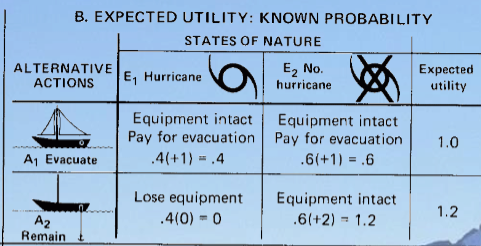PPT 3: Tsunamis
What is a tsunami?
A tsunami is a series of large waves caused by the sudden displacement of water. The word "tsunami" means "harbour wave" in Japanese.
What events can trigger a tsunami?
Earthquakes that uplift the seafloor
Landslides
Volcano flank collapse
Underwater volcanic eruptions
Meteorite impacts
1/24
There's no tags or description
Looks like no tags are added yet.
Name | Mastery | Learn | Test | Matching | Spaced |
|---|
No study sessions yet.
25 Terms
What is a tsunami?
A tsunami is a series of large waves caused by the sudden displacement of water. The word "tsunami" means "harbour wave" in Japanese.
What events can trigger a tsunami?
Earthquakes that uplift the seafloor
Landslides
Volcano flank collapse
Underwater volcanic eruptions
Meteorite impacts
What are the four stages of tsunami development?
Stage 1: Seafloor displacement sets waves in motion, transmitting energy outward.
Stage 2: Waves move across the ocean at high speeds (500+ km/h) with low amplitude.
Stage 3: As waves approach land, they slow down, pile up, and increase in height.
Stage 4: Upon impact, waves reach heights of dozens of meters and travel inland.
What is run-up in a tsunami?
The maximum vertical height that a tsunami wave reaches as it travels inland. (Height from the sea floor)
What are the types of tsunamis?
Distant tsunami: Travels thousands of km across the ocean, losing energy over distance.
Regional tsunami: Affects shorelines 100-1000 km from the source.
Local tsunami: Affects shorelines within 100 km of the source and is the most dangerous.
What regions are at the highest risk of tsunamis?
Coasts near or across from subduction zones.
The Pacific Ocean and the Mediterranean Sea.
What are the primary effects of tsunamis?
Flooding and erosion destroy beaches, vegetation, and infrastructure.
Most deaths result from drowning.
Injuries occur from impacts with debris.
What are the secondary effects of tsunamis?
Fires due to gas line ruptures.
Contaminated water supplies leading to disease outbreaks (e.g., cholera).
What happened during the Indian Ocean Tsunami of 2004?
A M9.1 earthquake off the coast of Sumatra triggered the tsunami.
Over 230,000 people died due to lack of a warning system.
Many victims did not recognize the warning sign (receding sea).
What were the lessons from the 2004 tsunami?
A tsunami warning system was implemented in the Indian Ocean in 2006.
Education on tsunami hazards and evacuation planning became a priority.
How are tsunamis detected?
The Pacific Tsunami Warning System uses seismographs to detect earthquakes.
Tsunameters on the seafloor measure water pressure changes and confirm tsunamis.
How can tsunami damage be minimized?
Structural control: Building regulations, flood-proofing, and seawalls.
Inundation maps: Identify high-risk areas to guide development restrictions.
Land use planning: Vegetation can provide natural barriers.
What happened during the Japan Tsunami of 2011?
A M9.0 earthquake off the east coast of Japan triggered a tsunami.
Over 15,000 people died despite a warning issued an hour in advance.
Extensive damage occurred to Japan’s infrastructure.
What are the three categories of hazard adjustments?
Modify the loss burden: Insurance, relief aid.
Modify design: Retrofitting buildings, engineering improvements.
Modify human vulnerability: Preparedness programs, land-use planning, warning systems.
Why are hazards not always a government priority?
Governments prioritize unemployment, health care, and economic stability over disaster planning.
What are the two loss scenarios in disasters?
Accepting loss: No government intervention; people bear risks themselves.
Sharing loss: Government enforces regulations and provides aid after disasters.
What are challenges with disaster aid?
Sudden-onset disasters receive more attention and funds.
"Donor fatigue" can occur with frequent disasters.
Recovery in some countries takes a long time.
What factors affect individual hazard adjustment choices?
Experience: Past exposure increases preparedness.
Wealth: More resources allow for better protection.
Personality: Risk-takers may downplay hazard risks.
What is Prospect Theory in risk assessment?
People prefer avoiding losses over taking equivalent risks for potential gains.
What are human responses to hazards?
Cultural adjustments: Changes due to environmental shifts (e.g., oil discovery forcing local adaptation).
Purposeful adjustments: Intentional measures to reduce loss (e.g., earthquake-resistant buildings).
Incidental adjustments: Indirect benefits from advancements (e.g., better warning systems).
What is absorptive capacity?
The ability of a population to withstand hazard impacts due to various adjustments.
What is the Gambler’s Fallacy in disaster perception?
The incorrect belief that if an event occurs once, it is less likely to occur again soon.
How does Expected Utility Theory apply to disasters?
People make decisions based on expected outcomes, weighing risks and benefits.
What role does government play in risk management?
Disaster relief and emergency planning.
Infrastructure investments to mitigate hazards.
Regulations to enforce preparedness and resilience.
Theory of Choice (Chart Question)
40% chance of a hurricane, would you stay or leave?
